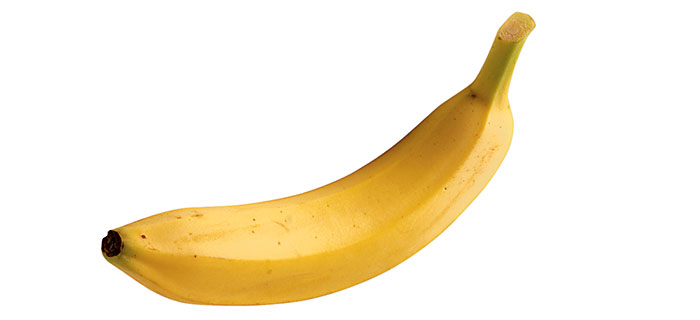
Pronounce it: bah-nah-nah
Probably the best known, most popular tropical fruit, their name probably derives from the Arabic for finger, ‘banan’.
There are a number of varieties, inluding red bananas (which have a yellow-pink skin and flesh) and the small sugar bananas, which are around 3 inches long. But the most commonly sold type in the UK is Cavendish – the longer ones tend to come from Latin America, as they pick them later, and the smaller ones from the Caribbean, where they pick earlier.
All bananas are extremely nutritious; rich in potassium, riboflavin, niacin and fibre, and the rapid energy boost given by their high sugar levels means that they’re a great snack.
Read our guide on the health benefits of bananas.
Availability
All year round.
Choose the best
To eat straight away, go for bananas with very small patches of black on the skin – that means they’re ripe. Otherwise, choose yellow with ‘green tinged ends’ they can be ripened at room temperature. Bananas that are green all over are unripe, and can’t be eaten.
Prepare it
Just peel and slice or mash.
Store it
In a fruit bowl. Putting bananas in the fridge will make the skins go black and everything else in the fridge smell of banana.
Cook it
Mashed and used to make banana bread or served with single cream and sugar. Pureed for smoothies.
Baked for 20 minutes in foil with the juice of half a lemon, a little butter, a couple of tablespoons of muscovado sugar and a splash of rum or cognac.
Barbecued for 10 minutes (make a small slit in the skin first) then split open and served with cream.
Peeled, halved, brushed with lemon juice, sprinkled with sugar and grilled until soft, then served with gammon or fish.
Alternatives
Try plantain.
Be the first to comment on "Banana"